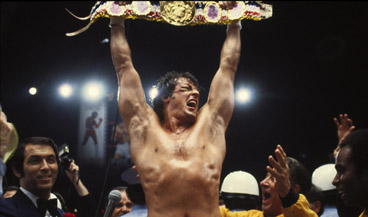|
|
Chapter TwoRocky II vs. Rambo: First Blood Part IIBy Brett Ballard-BeachOctober 27, 2011
But Rambo II also swerved the series in a radically different direction, that Rambo III and Rambo would adhere to: John Rambo was no longer a misfit fighting to get out from under the thumb of the man, but the highly skilled, nearly indestructible war machine the first film purported him to be, set loose on the killing fields of the world. He was now a man of the world with no country to call his own. If Rocky IV was the story of a Stallone character single-handedly and proactively winning the Cold War, then Rambo II is the story of a Stallone character single-handedly (almost) and retroactively winning the Vietnam War. With a screenplay by Stallone and James Cameron and direction by George P. Cosmatos, Rambo II is a working definition of what I refer to as “superaction." There is no explosion too big, no machine gun with too many bullets, no stunt fall too outrageous. With a bare minimum of plot semantics to get out of the way (about 15 minutes worth, same as First Blood), Rambo II rescues its hero from hard labor with the chance to serve his country once again, this time on a mission to search for and document the possible existence of American POWs in Vietnam. Rambo interprets this request as “terminate Vietcong and Russian soldiers with extreme prejudice” and the film proceeds for a breathless hour or so of heads ripped by bullets, necks snapped by hands, and the occasional body detonated via explosive-tipped arrow, with only a brief pause when Rambo is captured and tortured on an electrified box spring.
|

|
|
|

|
Sunday, April 28, 2024
© 2024 Box Office Prophets, a division of One Of Us, Inc.


